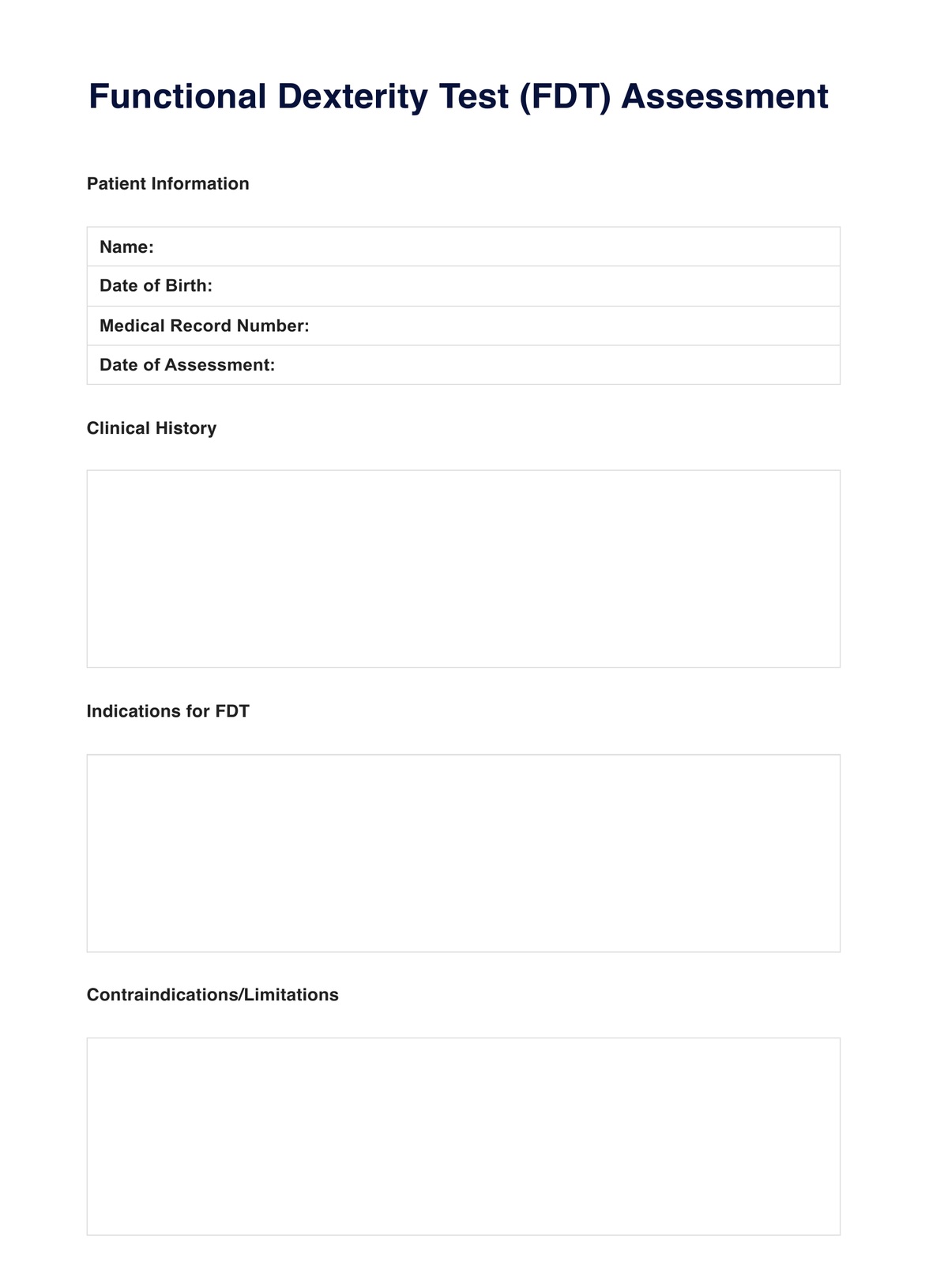The Functional Dexterity Test assesses an individual's ability to perform delicate motor tasks, with dexterity tests measuring hand-eye coordination, precision, and control.

Functional Dexterity Test
Explore our Functional Dexterity Test guide for insights on assessing and enhancing manual skills. Elevate functional abilities with expert advice.
Use Template
Functional Dexterity Test Template
Commonly asked questions
The dexterity test evaluates an individual's skill, and dexterity tests their proficiency in precise hand and finger movements, often assessing coordination and control.
The Hand Function Test explicitly evaluates the hand's skill, measuring how well someone can manipulate objects and demonstrating fine motor skills.
EHR and practice management software
Get started for free
*No credit card required
Free
$0/usd
Unlimited clients
Telehealth
1GB of storage
Client portal text
Automated billing and online payments











